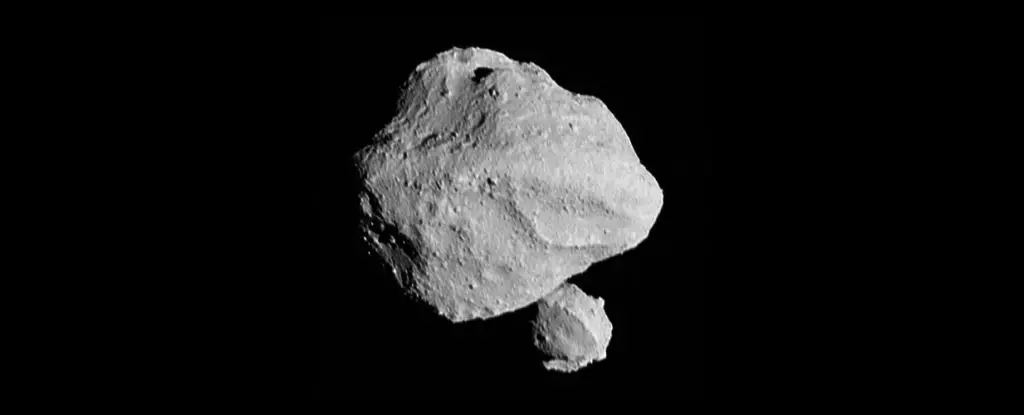The NASA asteroid probe Lucy has recently completed the first of its flybys of its asteroid targets, resulting in a groundbreaking discovery. Asteroid Dinkinesh, located in the main belt between Mars and Jupiter, has been found to have its own tiny little asteroid moon. This revelation suggests that there may be numerous binary asteroids in our solar system that are yet to be explored, leading to a newfound understanding of how rocks in the solar system grow and interact.
The presence of binary, trinary, and even quaternary asteroids in the solar system is not unknown to scientists. However, the prevalence of such bound groups remains a mystery. As NASA’s Lucy approached the asteroid Dinkinesh, scientists noticed a peculiar change in its brightness, hinting at the presence of a second object that periodically obscured its view. Upon a closer observation, Lucy confirmed the suspicions by capturing detailed images of the two objects engaged in a close orbital dance. The larger rock measures approximately 790 meters (2,600 feet) in width, while the smaller moonlet is only 220 meters (720 feet) in size.
Although similar in some aspects to near-Earth asteroid binary Didymos and Dimorphos, Dinkinesh and its moonlet exhibit intriguing differences that scientists are eager to investigate further. As asteroids that exist in Jovian orbit are believed to be composed of the same materials that formed the planets in the early stages of the Solar System, studying these binary asteroids can provide valuable insights into the formation and development of our cosmic neighborhood. By discovering more binary asteroids like Dinkinesh, researchers hope to gain a better understanding of the process through which smaller rocks accumulate and merge, potentially leading to the creation of planets.
In its 12-year mission, the Lucy probe aims to thoroughly examine two main belt asteroids and nine Trojans. The knowledge gained from these encounters will contribute to a greater understanding of the Solar System’s origin and the mechanisms that brought the planets into existence. As the data from Dinkinesh is still being analyzed, the extraction process not only provides valuable insights about the asteroid but also offers an opportunity to assess the functioning of the Lucy spacecraft.
While scientists eagerly await the remaining data from Dinkinesh, Lucy is already en route to its next destination, the asteroid Donaldjohanson, where another rendezvous is scheduled for 2025. With each new discovery, our understanding of the solar system continues to expand, and the existence of binary asteroids provides further evidence of the complex dynamics at play within our celestial neighborhood. The exploration of these enigmatic objects promises to unlock hidden insights into the origins and evolution of our cosmic home.


Leave a Reply